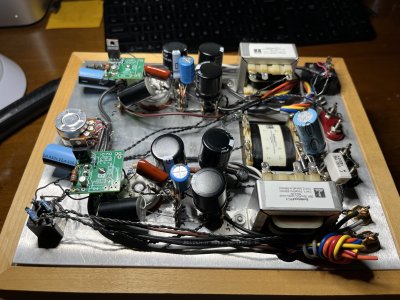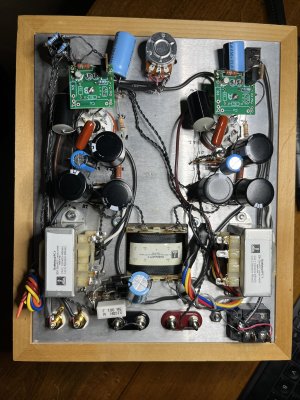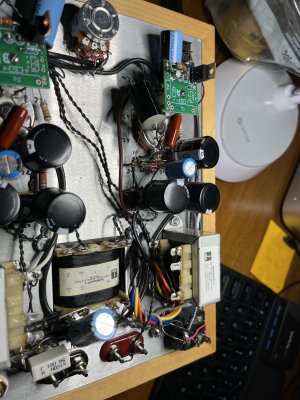Hi All,
I built several kits back around 2010 and they've been working great for me all this time. Recently, the SEX kit (not sure which version I have, has C4S upgrade, headphone plug update that disables speakers when plugged in, maybe something else?) has started having a noisy right channel. I hear it both in the right speaker or in the headphones, with and without any source plugged in, and the noise level is constant regardless of volume set.
It sorta sounds likes "sshhhhhhhhhhhhhhh." As the SEX powers on, I briefly hear it first in the left channel, which then after a few seconds the left noise tappers off to a being almost perfectly quiet. However, as the left gets quiet, the right gets slightly louder and then stays at a consistent noise level that can be heard above the music being played. I've flipped the tubes, switching left/right, and I still hear the sound in the right channel. I looked at the following post (https://forum.bottlehead.com/index.php?topic=14635.msg132983#msg132983) and reflowed the solder on everything in the right side of the unit and the noise still remains.
I've been running this for about 14+ years now, with the original tubes, and it's worked beautifully all this time. Is there a part that I might need to replace to get this working properly again?
Thanks,
Pavel
I built several kits back around 2010 and they've been working great for me all this time. Recently, the SEX kit (not sure which version I have, has C4S upgrade, headphone plug update that disables speakers when plugged in, maybe something else?) has started having a noisy right channel. I hear it both in the right speaker or in the headphones, with and without any source plugged in, and the noise level is constant regardless of volume set.
It sorta sounds likes "sshhhhhhhhhhhhhhh." As the SEX powers on, I briefly hear it first in the left channel, which then after a few seconds the left noise tappers off to a being almost perfectly quiet. However, as the left gets quiet, the right gets slightly louder and then stays at a consistent noise level that can be heard above the music being played. I've flipped the tubes, switching left/right, and I still hear the sound in the right channel. I looked at the following post (https://forum.bottlehead.com/index.php?topic=14635.msg132983#msg132983) and reflowed the solder on everything in the right side of the unit and the noise still remains.
I've been running this for about 14+ years now, with the original tubes, and it's worked beautifully all this time. Is there a part that I might need to replace to get this working properly again?
Thanks,
Pavel




